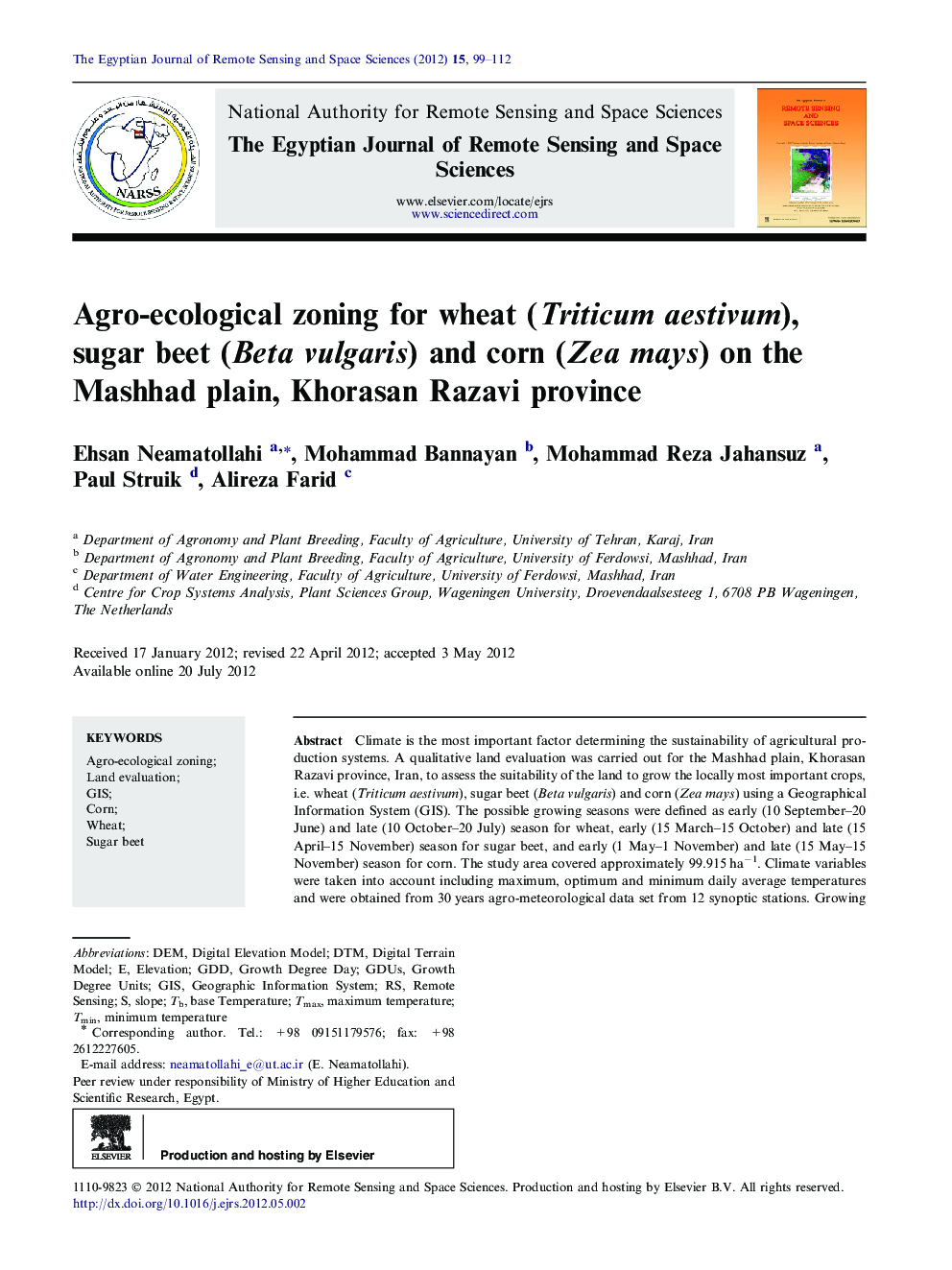| Article ID | Journal | Published Year | Pages | File Type |
|---|---|---|---|---|
| 4681348 | The Egyptian Journal of Remote Sensing and Space Science | 2012 | 14 Pages |
Climate is the most important factor determining the sustainability of agricultural production systems. A qualitative land evaluation was carried out for the Mashhad plain, Khorasan Razavi province, Iran, to assess the suitability of the land to grow the locally most important crops, i.e. wheat (Triticum aestivum), sugar beet (Beta vulgaris) and corn (Zea mays) using a Geographical Information System (GIS). The possible growing seasons were defined as early (10 September–20 June) and late (10 October–20 July) season for wheat, early (15 March–15 October) and late (15 April–15 November) season for sugar beet, and early (1 May–1 November) and late (15 May–15 November) season for corn. The study area covered approximately 99.915 ha−1. Climate variables were taken into account including maximum, optimum and minimum daily average temperatures and were obtained from 30 years agro-meteorological data set from 12 synoptic stations. Growing Degree Days (GDDs) were determined for wheat, sugar beet, and corn crops from sowing to harvest. To produce digital elevation model for Mashhad plain two sources were used on utilization of the IRS III satellite images with resolution that is 23.5 m, and topographic maps with scale of 1:25000. Aspect and slope layers were produced by Arc GIS 9.2 software. The study identified suitable elevation, slope, and GDDs for optimal growth and indicated that high yields are possible for wheat, sugar beet, and corn on the Mashhad plain. The study also identified the most suitable regions of the Mashhad plain for each crop.
